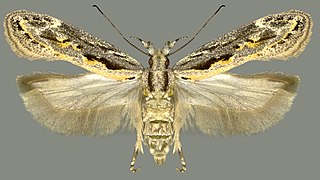Related Research Articles

The moose or elk is a member of the New World deer subfamily and is the only species in the genus Alces. It is the largest and heaviest extant species in the deer family. Most adult male moose have distinctive broad, palmate antlers; most other members of the deer family have antlers with a dendritic ("twig-like") configuration. Moose typically inhabit boreal forests and temperate broadleaf and mixed forests of the Northern Hemisphere in temperate to subarctic climates. Hunting and other human activities have caused a reduction in the size of the moose's range over time. It has been reintroduced to some of its former habitats. Currently, most moose occur in Canada, Alaska, New England, New York State, Fennoscandia, the Baltic states, Poland, Kazakhstan, and Russia.
In the United States Air Force, a division was an intermediate level of command, subordinate to a numbered air force, controlling one or more wings. It also controlled squadrons without associated same-function wings, i.e., 17th Defense Systems Evaluation Squadron had no associated wing, but its function was part of the 24th Air Division. Divisions are now considered obsolete.
Ogge is a lake in the municipalities of Birkenes and Iveland in Agder county, Norway. It is located about 40 kilometres (25 mi) north of the city of Kristiansand, just east of the villages of Vatnestrøm and Oggevatn. The 6.71-square-kilometre (2.59 sq mi) lake includes about 360 islands and reefs. The overall length of the lake is approximately 16 kilometres (9.9 mi). The Sørlandsbanen railway line and the Norwegian County Road 405 both run along the west side of the lake.

Agnippe is a genus of moths in the family Gelechiidae.

Aroga is a genus of moths in the family Gelechiidae.

Athrips is a genus of moths in the family Gelechiidae.
Ornativalva is a genus of moths in the family Gelechiidae.
Parapsectris is a genus of moths in the family Gelechiidae.

Scrobipalpa is a genus of moths in the family Gelechiidae. Euscrobipalpa has sometimes been treated as a distinct subgenus, or even as a full genus, but is generally no longer recognised as valid, following Ponomarenko & Park (2007).

Syncopacma is a genus of moths in the family Gelechiidae.

The Alaska moose, or Alaskan moose in Alaska, or giant moose and Yukon moose in Canada, is a subspecies of moose that ranges from Alaska to western Yukon. The Alaska moose is the largest subspecies of moose. Alaska moose inhabit boreal forests and mixed deciduous forests throughout most of Alaska and most of Western Yukon. Like all moose subspecies, the Alaska moose is usually solitary but sometimes will form small herds. Typically, they only come into contact with other moose for mating or competition for mates. The males and females select different foraging habitats leading to spatial segregation throughout much of the year. During mating season, in autumn and winter, male Alaska moose become very aggressive and prone to attacking when startled.

Ornativalva plutelliformis is a moth of the family Gelechiidae. It was described by Staudinger in 1859. It is found from southern Europe and North Africa east to western Asia and China (Xinjiang).
Ornativalva heluanensis is a moth of the family Gelechiidae. It was described by Debski in 1913. It is found in Spain, Croatia, Ukraine and Russia, as well as on the Canary Islands, Sicily, Malta and Cyprus. Outside Europe, it is found in North Africa, Sudan, Israel, Syria, Turkey, Saudi Arabia, Iraq, Iran, Afghanistan, Pakistan and Mongolia.

Gelechiinae is a subfamily of moths in the family Gelechiidae. It was described by Henry Tibbats Stainton in 1854.

Anomologinae is a subfamily of moths in the family Gelechiidae.
Ornativalva mixolitha is a moth of the family Gelechiidae. It was described by Edward Meyrick in 1918. It is found in Morocco, Algeria, Tunisia, southern Russia, Turkey, Sudan, Iraq, Iran, Afghanistan, Pakistan, India (Bihar) and Mongolia.
Ornativalva cerva is a moth of the family Gelechiidae. It was described by Oleksiy V. Bidzilya in 2009. It is found in Uzbekistan.
Armatophallus is a genus of moths in the family Gelechiidae.
Latin American and Caribbean Space Agency is an international space exploration organization based in Mexico, comprising several countries in Latin America and the Caribbean region. It was established in 2021 as part of the Latin American space race. According to its charter, its objective is to coordinate the space cooperation activities of Latin American and Caribbean countries for the peaceful use and exploration of outer space, the Moon and other celestial bodies.
References
- ↑ Savela, Markku. "Ornativalva alces Bidzilya, 2009". Lepidoptera and Some Other Life Forms. Retrieved March 14, 2018.